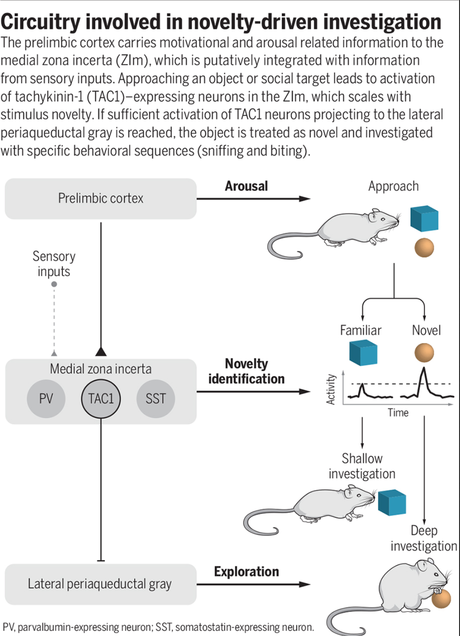Every morning, as I am passing through the waking, exercise, and breakfast rituals that finally deliver me to my 'professor is in' office - a converted front bedroom of our house - I marvel at parallel ritualistic behaviors in my two abyssinian 1 year old cats, driven by an almost manic curiosity that impells them to seek new objects, crannies and nooks that hey can explore, occasionally hitting the jackpot of finding a cockroach, or a new object that they can break or brush onto the floor. Curiosity is one of the most important innate drives that they or I posses, and many think it should elevated to join the list of the four F's we teach first year Medical Students (fighting, feeding, fleeing, and fornicating). As Farahbakhsh and Siciliano note in their perspectives article on the work of Ahmadlout et al., "Attraction to the unknown, or curiosity, is a prerequisite for higher-order knowledge. Innate attraction to novelty is thought to be an evolutionary prerequisite for complex learning and guides organisms toward acquisition of adaptive behavioral repertoires."
Ahmadlou et al. have found circuitry in the mouse brain that is necessary for the exploration of new objects and conspecifics. A specific population of genetically identified γ-aminobutyric acid (GABA)—ergic neurons in a brain region called the zona incerta receive excitatory input in the form of novelty and/or arousal information from the prelimbic cortex, and these neurons send inhibitory projections to the periaqueductal gray region. Here is a summary graphic from the perspectives article (click to enlarge):


